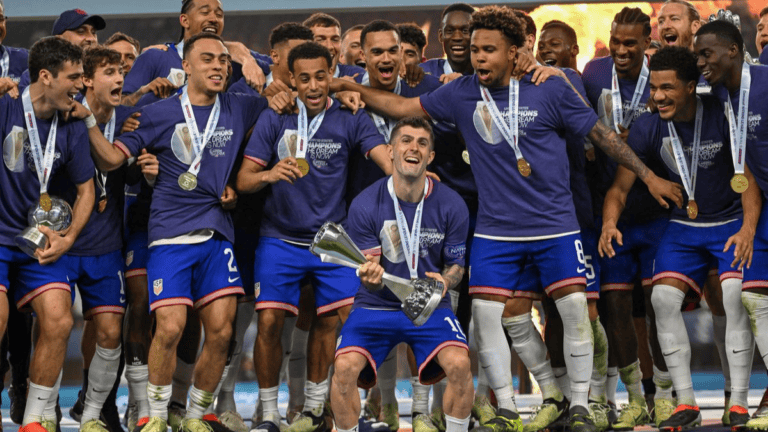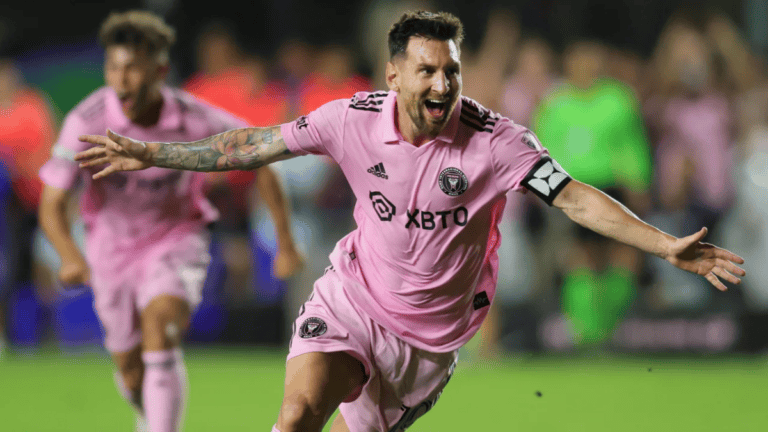A new soccer tournament, called The Soccer Tournament, took the US by storm last summer. A combination of the 7v7 format (teams of 7, instead of the 11 of traditional soccer) with rules designed to maximize action and excitement, as well as a $1 million winner-takes-all prize, caught the attention of casual soccer fans across the country. It was so popular that all games will be televised on ESPN this year (from June 5-10).
I love this format. The founders of this tournament created a great formula to keep audiences engaged. They actually started with a 3 on 3 winner takes all tournament format for basketball, which maximized the action and drama in that sport. On the back of the success of that tournament, they translated it over to soccer with great success in the first year.
If you didn’t catch the tournament last year, you might wonder what all the hype is about. Let’s break it down.
Format and Rules
To understand the hype you must first understand the rule differences between this tournament and traditional soccer.
- 7 players on the field for each team instead of 11
- The field is a little less than half the size of a traditional soccer field – about 65 yards long by 45 yards wide
- Goals are 6 ft tall by 18 ft wide, instead of 8 ft tall by 24 ft wide in 11 aside
- Open substitutions allowed at any point (no stoppage in play necessary)
- Each half is 20 minutes long as opposed to 45 minutes
- No offsides
- Kick-ins instead of throw-ins
- Games must end in a goal (more on that below)
Target Time Ending
The biggest deviation from traditional soccer is how the games must end – with the ball in the net. According to the TST website here is how it works:
After the end of the second half, the remainder of the match consists of “Target Score Time”, with the target score being set by adding one goal to the leading (or tied) team’s score, i.e. if a game is standing at 3–1 after full-time, the target score will be set to 4. The game ends once the target score is reached by either team. If the target is not reached after 5 minutes, one outfield player from each team exits the field until only one is left, with the process continuing every 5 minutes until the winning goal is scored.
After the end of the second half, the remainder of the match consists of “Target Score Time”, with the target score being set by adding one goal to the leading (or tied) team’s score, i.e. if a game is standing at 3–1 after full-time, the target score will be set to 4. The game ends once the target score is reached by either team. If the target is not reached after 5 minutes, one outfield player from each team exits the field until only one is left, with the process continuing every 5 minutes until the winning goal is scored.
https://en.wikipedia.org/wiki/The_Soccer_Tournament
This type of ending ensures that each game ends with a goal. This is way different than traditional soccer, which can see excitement dwindle as the game wears on and teams start getting defensive to protect a lead.
While protecting a lead is still important with a target time format, it does mean that teams still need to attack to win. This keeps the games open until the very end.
It also gives the losing team a chance, which makes the games exciting. There’s always a chance. And we saw a few comebacks last year where a team overcame a large deficit to win in target time. We also saw a few situations where teams were down to 1-2 field players plus a goalkeeper. The openness of these games was fun to watch.
I don’t think FIFA will be implementing this rule anytime soon, but it is a fun experiment for this alternative form of soccer.
Condensed Action
I think the biggest advantage of the 7v7 format, and what attracts the casual fan the most, is the condensed action.
With fewer players on the field, the goals closer together, and no offsides, the goalscoring opportunities are greatly increased compared to a traditional game of soccer. While many fans appreciate the finer tactical points of high level soccer, as well as the rhythm and drama of a full-sided game, the amount of exciting moments in a 7v7 match tends to excite neutrals a bit more.
Given the smaller space, this set up tends to favor more technical and creative players opposed to the pure athletes. People who appreciate skills and creativity will enjoy these games.
7v7 gives you more goals, quicker transitions, faster overall play, and shorter matches. Even for fans of the traditional game, this style gives you something novel to enjoy.
Fun for the Players
Players love this format too. If you ask any serious player what type of training exercise they prefer, most will say 5v5 or 7v7 instead of playing a full-sided 11v11 match.
Why? You get more of the ball, the smaller field and compressed space create a more intense environment, and the smaller field emphasizes technical skill, creativity, and intelligence over pure athleticism.
Plus the shorter games and open substitutions mean that players don’t have to fight through the grind of completing 90 minutes on a big field.
When the players are having fun, it shows in their performances. Even though they are very intense, the games definitely have more of a loose vibe to them compared to traditional games. The looser structure and less rigid reliance on tactics imparts a more free-flowing nature to the players. The fans also seem to enjoy this less rigid approach.
Old Stars Mix with Amateurs
Perhaps the biggest surprise is the names participating in the tournament. Legends of the game like Serio Aguero, Mario Balotelli, Nani, and many others, including some former US National Team players, give this tournament some major star power.
This format allows for older players to still make a huge impact on games, as they don’t have to run as much and can substitute in and out on the fly. This levels the playing field a bit for the older guys, as the athletic advantage of youth doesn’t translate as much on a smaller field with less space and unlimited substitutions.
I think one of the best aspects of the tournament is how lesser known professionals, unknown amateurs, and small-sided specialists (like indoor or futsal players) can mix with these high profile legends of the game. The small field can give the opportunity to some players who never got a chance to play at the highest level to compete against some very well-known players. And for some, this is a great opportunity to make a name for themselves.
Big Teams
Of course one of the biggest draws is the names of some of the teams competing. Bayern Munich, Borussia Dortmund, Inter Milan, Burnley, Como, Villarreal, and many others are sending teams to compete.
While there will be very few players from their actual first team, we saw some former legends from these squads mixed with some up and coming players. Even though not all of these teams performed well last year, the fact that they are involved at all has attracted a ton of attention and excitement.
Some teams even have celebrities involved who have a history in the game too. Como had Steve Nash (who played growing up and is involved with the ownership of this tournament), Nati SC featured former NFL player Chad Ochocinco (also with a history in the game), and this year Burnley FC plans to use former NFL player J.J. Watt in goal.
Although purists may not like it, you’ll never see this type of novelty involvement in a regular game. The 7v7 format allows for guys like this to compete, which adds a layer of appreciation for the incredible athleticism of these participants from other sports. It’s not easy to play two sports at a high level, even if they’re secondary players at TST.
The Drama of Winner Takes All
This is perhaps the biggest attraction. When the stakes are higher, it adds to the intensity, which makes the games more exciting and competitive.
As all games must end in a goal, it means that the final goal will win a team $1 million dollars. That’s a lot of money. An amateur team won last year, and you know in addition to the competitive aspect of winning, the money must have meant a lot.
If this article has piqued your interest, The Soccer Tournament will air on ESPN from June 5-10. Check out at least one game – I can almost guarantee you’ll be hooked.







